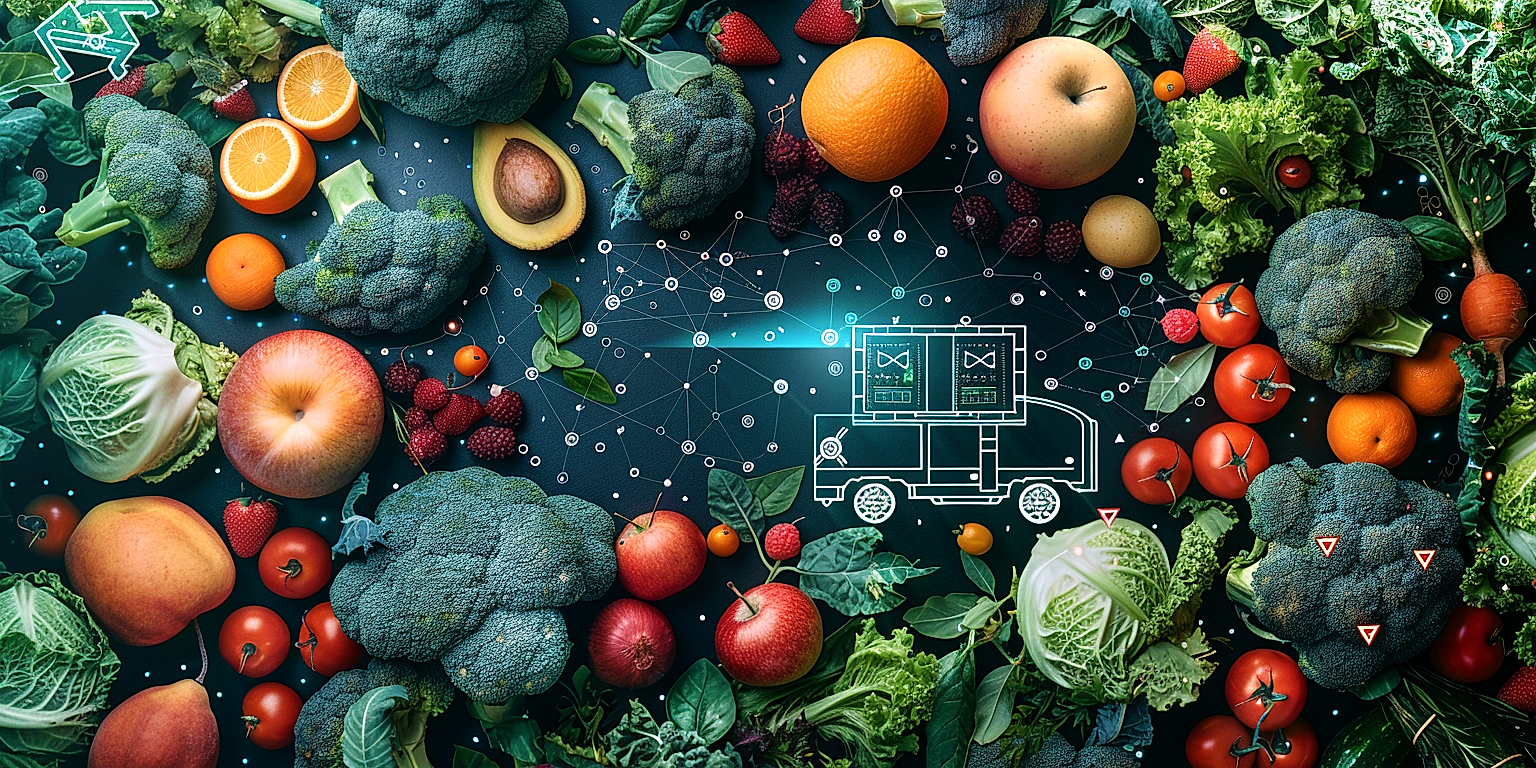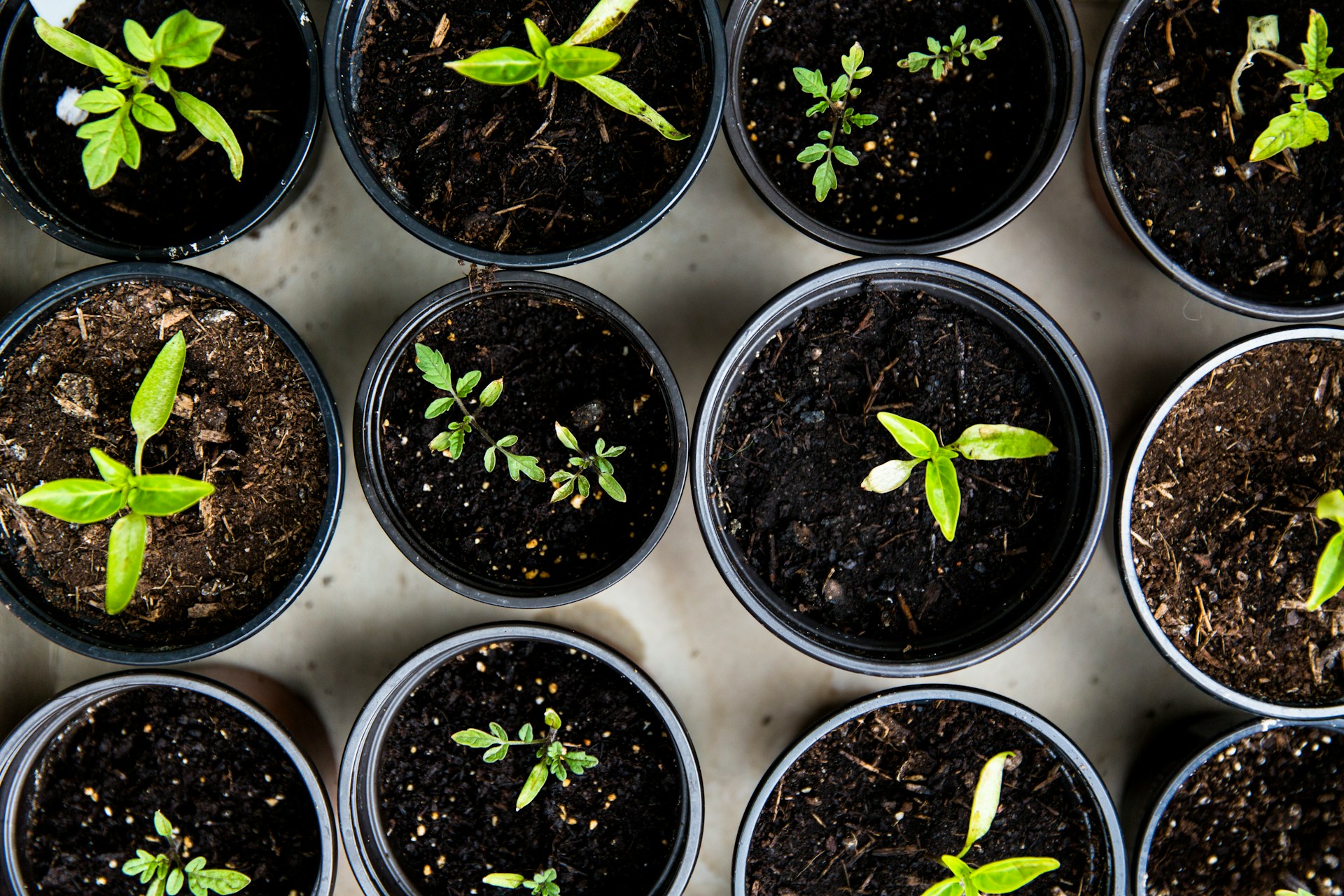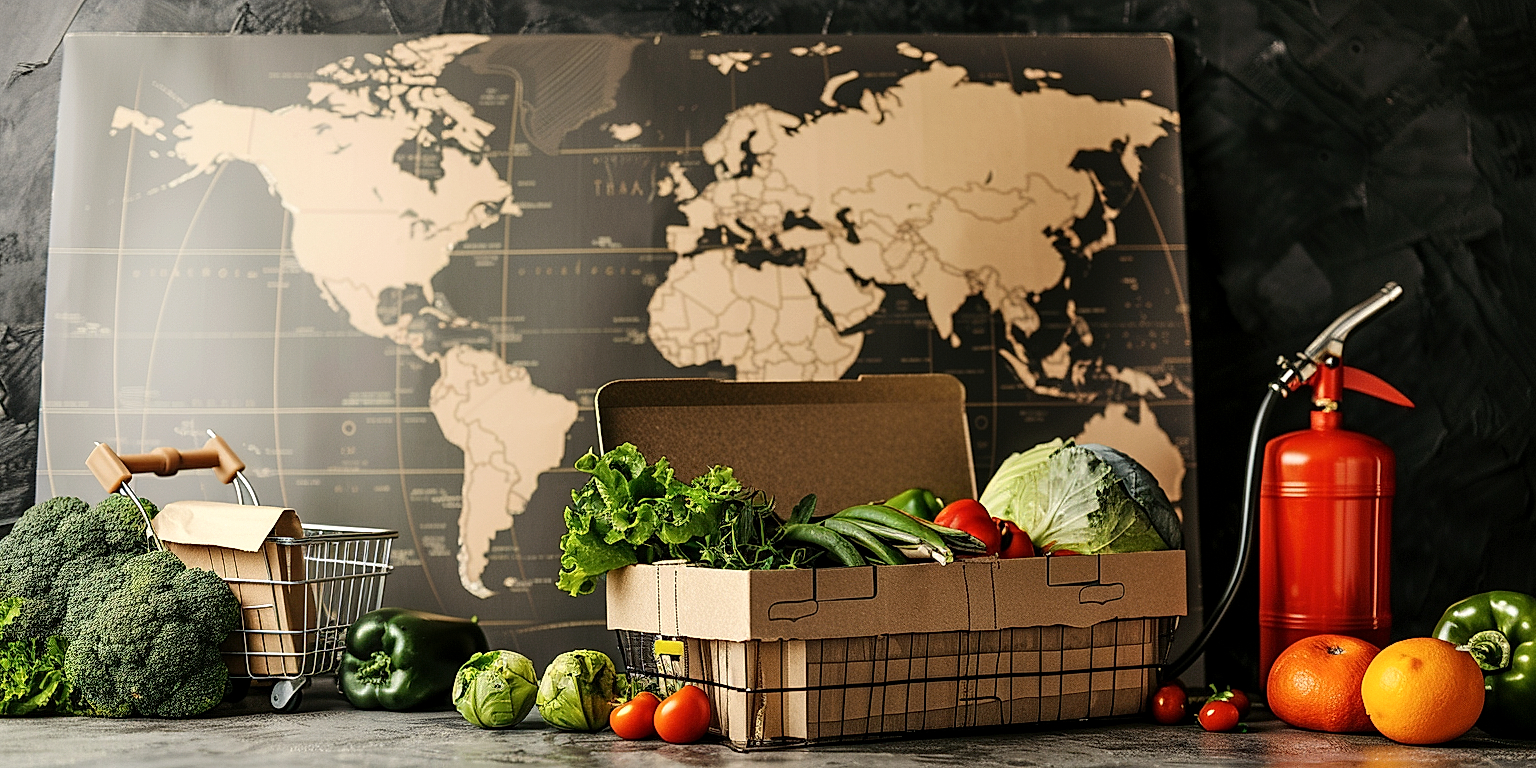The evolution in the shipping industry over the past decade, especially in regards to produce movement, has been quite remarkable.
As the demand for fresh, quality produce continues to climb, the shipping industry has had to adapt accordingly.
Several game-changing trends are taking center stage.
These have compelling implications for both growers and shippers alike, with remarkable potential to reshape the landscape of the entire industry.
To stay ahead of the competition, it’s critically vital to remain informed about these dynamic shifts.
In this article, we will delve into these emerging trends, examining how they might influence the future of the produce shipping industry.
Emerging Trends In The Produce Shipping Industry
1. Increasing use of blockchain for supply chain transparency.
The produce shipping industry is witnessing a remarkable shift in its operations owing to the adoption of new technologies.
Among the emerging trends, the introduction and increasing use of blockchain for improving supply chain transparency presents significant benefits.
Blockchain is a decentralized, digital ledger that securely records all transactions in a supply chain, enhancing visibility and accountability.
The transparent nature of blockchain technology provides an undeniable and auditable trail of each item, from the farm to the consumer’s table, thereby fostering trust and credibility in the supply chain.
Through the implementation of blockchain, companies can efficiently track and trace the movement of produce and ensure that quality standards are met.
Blockchain’s immutable records can protect against fraud and manipulation within the supply chain, offering companies, consumers, and regulators increased confidence in the safety, quality, and origin of the produce.
Blockchain’s application extends to addressing counterfeiting issues and mitigating the risk of costly recalls and reputational damage.
Smart contracts on blockchain platforms can automate processes, improve speed, and reduce inefficiencies in transactions, contributing to leaner and more cost-effective supply chain operations.
Growers, shippers, retailers, and consumers can all benefit from the transparency and traceability offered by blockchain-enabled supply chains.
Customers are particularly interested in the provenance of their food and the assurances of quality and safety that come with such information.
Blockchain provides a means for them to verify this information, thereby enhancing consumer trust and loyalty.
Multiple prominent companies in the produce shipping sector, including top food distributors and retailers, have already started exploring and integrating blockchain into their supply chains.
Notwithstanding, the widespread adoption of blockchain for supply chain transparency in the produce shipping industry is not devoid of challenges.
These challenges include the need for standardization, interoperability, data privacy, and the requisite technological infrastructure and know-how.
Nonetheless, with continual advancements and the benefits outweighing the obstacles, the trend towards blockchain adoption in the produce shipping industry appears poised to gain more traction in the coming years.
2. Growing Adoption of AI for Logistics Optimization
The emergence of Artificial Intelligence (AI) in the produce shipping industry is increasingly transforming operations and efficiency.
AI has given birth to automated systems that can carry out tasks much faster and more accurately than humans.
Machine learning, a subset of AI, has become instrumental in the logistics sector, predicting patterns and making insightful predictions.
In recent years, many companies have started to integrate AI systems in their logistics operations to optimize processes and ultimately, cost efficiency.
Some of the most successful companies attribute their success at scale to their implementation of AI-driven logistics optimization strategies.
AI-based systems in logistics can forecast demand, manage inventory levels, route optimization, and even assist in making data-driven decisions.
Companies use AI to collect, analyze, and interpret massive volumes of data, enabling real-time decision-making.
AI promotes a next-level approach to logistical operations by automation and data analytics that drive reactive and proactive business strategies.
By predicting and identifying potential problems before they happen, AI helps businesses firefight and prevent potential losses, promoting efficiency and productivity.
Companies can use AI systems to study their customer’s behaviors, preferences, and predict future purchasing behaviors, this results in a more personalized customer experience and increases customer loyalty.
With its ability to analyze data quickly, enterprises can make quick decisions, optimizing their logistics and supply chain mechanisms.
Through the use of AI, the agriculture sector has been able to optimize logistics to improve food production, processing, and distribution, resulting in a significant decrease in food waste.
AI in logistics and supply chain management is a technological leap that promises to propel the produce shipping industry to new heights of efficiency and customer satisfaction.
Despite the benefits, companies also face challenges related to data security, quality, and privacy, when adopting AI technology. Therefore, it’s crucial for businesses to adhere to global data protection rules and regulations.
With continuous evolution and advancement in AI, the technology has the potential to dramatically improve the efficiency and functionality of produce shipping in the near future.
To maximize the value and benefits of AI, the produce shipping industry must continuously invest in modern technologies, data analytics, and related skill sets, constantly adapting to the rapidly changing marketplace.
3. Rise of Temperature-Controlled and Smart Packaging
The trend towards adopting temperature-controlled and smart packaging within the produce shipping industry has experienced a significant shift.
One major driver of this trend is the increasing demand for fresh produce that can be transported over longer distances while maintaining its quality and freshness.
Temperature-controlled packaging is a technology that uses insulating materials and refrigerants to maintain a constant temperature within the packaging during transportation.
Blockquote: With the rise of temperature-controlled and smart packaging, the limitations of distance, weather, and time are becoming less of a hindrance in the transportation of fresh produce.
This packaging allows for fruits and vegetables to remain at a prescribed temperature for a long period, thus ensuring that they reach consumers in their best state regardless of changes in external environmental conditions.
One of the main advantages of using this type of packaging is the ability to reduce product losses due to spoilage during transit.
It can maintain the freshness of the produce by controlling the molecular activity that leads to degradation, thereby extending shelf life.
On the other hand, smart packaging refers to the incorporation of technology into packaging materials to monitor and provide information about the quality and safety of the product inside.
It typically involves the use of sensors, indicators, or tags that can detect changes in the product’s environment and provide real-time updates to the carrier or the consumer.
For instance, packages embedded with smart sensors can provide data on temperature changes, humidity levels, and other environmental factors that could potentially impact the quality of the produce.
Such features enhance the traceability of produce and offer greater assurances of its safety and freshness.
Given the increasing consumer demand for transparency, the adoption of smart packaging is viewed as a forward-looking approach within the industry.
It not only provides a competitive advantage but also gives consumers the assurance of quality and safety that they need when buying fresh produce.
While both temperature-controlled and smart packaging present great benefits, their implementation also comes with challenges such as the need for continuous research and development, initial cost of installation, and the requirement for proper handling and disposal.
The trend towards temperature-controlled and smart packaging is hence a clear demonstration of how the industry is leveraging technology to meet rising consumer expectations, increase efficiency, and maintain the highest standards of quality.
4. Rapid expansion in direct-to-consumer produce delivery.
The produce shipping industry is currently witnessing a rapid expansion in direct-to-consumer (D2C) produce delivery.
This trend has been fueled by the changing consumer behavior, especially due to the influence of the ongoing COVID-19 pandemic.
As a direct result of stay-at-home orders and lockdowns worldwide, individuals have been forced to restrict their outdoor movements, catalyzing their shift towards online grocery shopping and home deliveries.
This sudden surge in demand for D2C channels has prompted many companies in the produce shipping industry to overhaul their business models, with many repositioning themselves to cater to household demands directly.
Transitioning to a D2C model isn’t just an administrative shift, but it also requires significant infrastructure and logistic changes.
A successful D2C model necessitates the existence of robust backend systems that can handle order processing, inventory management, demand forecasting and, most importantly, logistical challenges associated with the delivery of perishable goods like fresh produce.
Besides, implementing such a model also requires advanced technologies for temperature control and smart packaging to ensure the consumers receive fresh produce in their optimal condition.
Moreover, companies moving towards the D2C model need to deal with the challenge of establishing direct communication channels with consumers.
Digital interfaces, like websites and mobile applications, have become the go-to solutions for these companies, enabling them to receive orders, feedback, and manage customer relationships effectively.
Another crucial aspect is last-mile delivery, which has been one of the most significant logistical challenges for companies in the D2C model.
Several companies have started collaborating with service providers offering services like drone deliveries and automated delivery cars to optimize the last-mile delivery process and reduce costs.
Indeed, the D2C model has upfront costs and several challenges; nonetheless, it offers a multitude of benefits in the long run, including better control over the supply chain, direct consumer relationship, increased ability to personalize offerings, and high profit margins, among others.
Given these benefits and the current market dynamics, it is anticipated that the rapid expansion in D2C produce delivery is not a mere fleeting trend, but a significant shift that is poised to reshape the future of the produce shipping industry.
Therefore, companies operating in this sector need to carefully consider this emerging trend and evaluate how adapting to it could potentially drive their business growth in the post-pandemic world.
Undoubtedly, the success of D2C delivery requires careful orchestration of various elements – right from procurement to delivery, and it’s these complexities that make this trend so interesting and worth exploring.
5. Implementation of drone technology for faster delivery.
The world of logistics and transportation is undergoing a massive transformation, thanks to technological advancements like drone technology.
Drone technology is rapidly playing a crucial role in the produce shipping industry.
By leveraging drone technology, businesses can not only speed up the delivery process, but also potentially reduce shipping costs and carbon footprint.
The drone delivery systems are designed in a way that can significantly reduce the time taken for farm produce to reach customers directly, thereby ensuring the freshness of the produce.
For instance, autonomous drones equipped with state-of-the-art navigation systems can follow optimized paths and overcome traditional challenges such as road congestion, thereby enhancing efficiency and productivity.
Moreover, drones encompass the capability to take off and land vertically, enabling deliveries in areas with limited infrastructure – a feat unmatched by conventional shipping methods.
This technology holds significant potential for remote locations as well, especially where transport infrastructure is weak or non-existent.
It’s not just about faster delivery times though; drone technology could also be an environmentally friendly solution in the long run.
Drones, being electrically powered, have the potential to reduce carbon emissions compared to traditional delivery vehicles.
The use of drones could also lead to lower shipping costs in the long term as they can carry out multiple deliveries per trip, depending on their size and capacity.
As the technology continues to mature, drones may soon be able to handle heavier loads, which directly translates to a significant cost-saving factor for companies involved in the produce shipping industry.
Furthermore, as drones continue to evolve, we can expect to see enhancements in their range and load capacity, making them even more useful for produce delivery.
Despite the promising future, it’s important to address the challenges and regulatory hurdles that come with this technology.
Regulatory frameworks around safety, privacy, and noise need to be fully evolved to mitigate the concerns associated with drones.
In conclusion, while drone technology presents a future with a plethora of opportunities for the produce shipping industry, its successful implementation will require a careful balance between maximizing advantages and addressing the legitimate concerns and potential risks.
Nonetheless, with continuous advancements and increasing acceptance, drone technology is poised to revolutionize the produce shipping industry bearing the potential to bring a new era of speed, efficiency, and sustainability.
The Bottom Line
It’s evident that technology is greatly reforming the logistics and supply chain industry.
With the escalating use of blockchain, transparency in the supply chain is getting a much-needed enhancement.
The expanded adoption of Artificial intelligence is making logistics optimization more efficient.
Furthermore, the emergence of temperature-controlled and smart packaging is proving to be revolutionary in ensuring the quality of goods.
In addition, the rapid upsurge in direct-to-consumer produce delivery is reshaping the traditional retail landscape.
Lastly, with the implementation of drone technology, the potential for faster delivery is getting redefined.
All these technological advancements are not just trends, but powerful tools that are and will continue to improve and streamline operations in the logistics and supply chain sector.




